Report: ISY2006 Object Oriented Programming - Function Room Booking
VerifiedAdded on 2023/06/09
|8
|791
|487
Report
AI Summary
This report presents an object-oriented programming (OOP) solution for a function room booking system. The report begins with a use case analysis, identifying actors like the Guest, Accountant, and Room Manager, and detailing the main and alternative flows for booking a function room. It then develops a domain model, outlining actors and objects within the system, and illustrates the interactions between them using lifelines and messages. Finally, it presents a class diagram, identifying the main classes such as the reservation class and their relationships, including one-to-many relationships and subclasses like check-in and check-out. The report aims to provide a structured approach to designing an online booking system, addressing the challenges of the manual system and offering a more efficient solution for managing function room bookings.
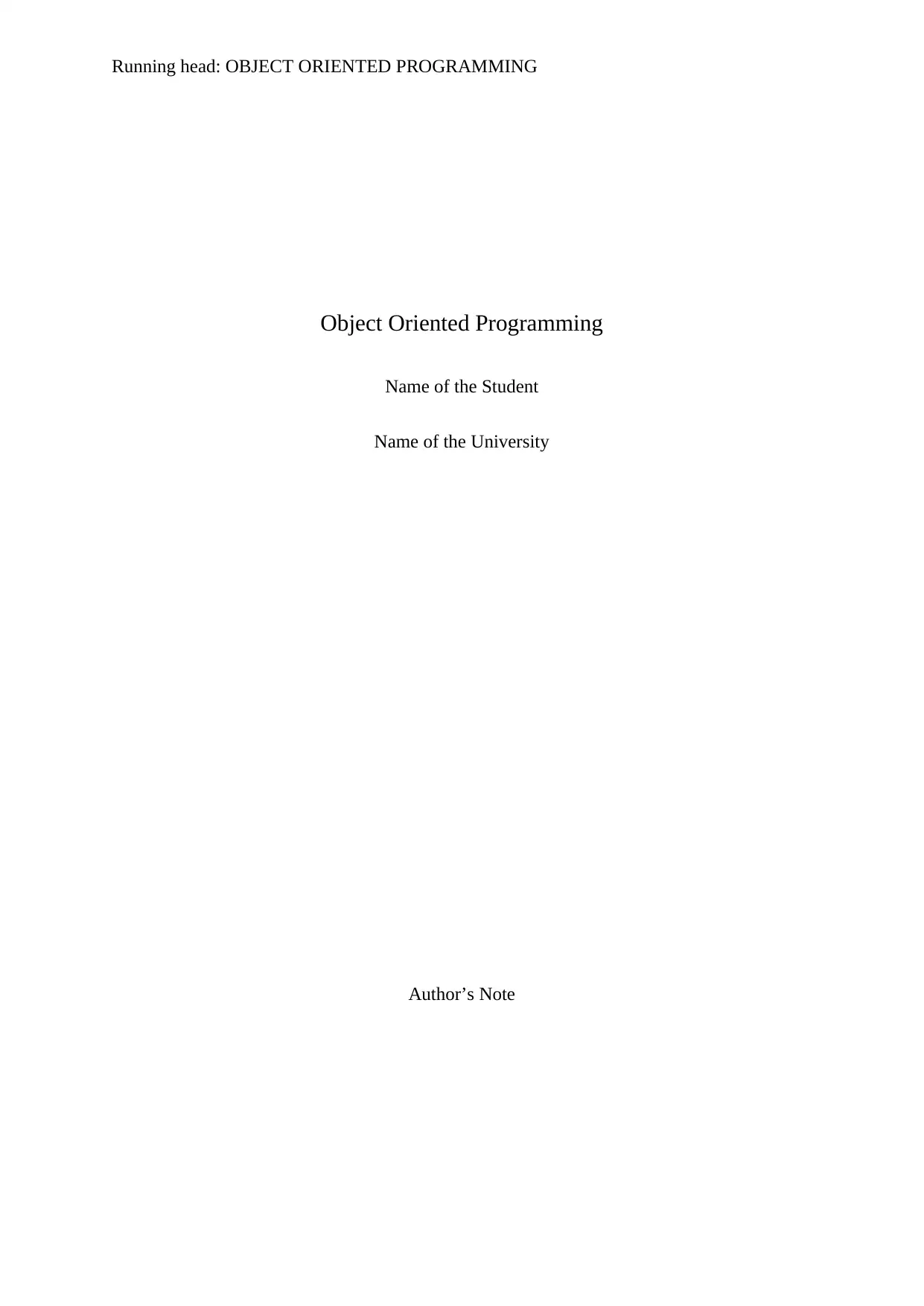
Running head: OBJECT ORIENTED PROGRAMMING
Object Oriented Programming
Name of the Student
Name of the University
Author’s Note
Object Oriented Programming
Name of the Student
Name of the University
Author’s Note
Paraphrase This Document
Need a fresh take? Get an instant paraphrase of this document with our AI Paraphraser
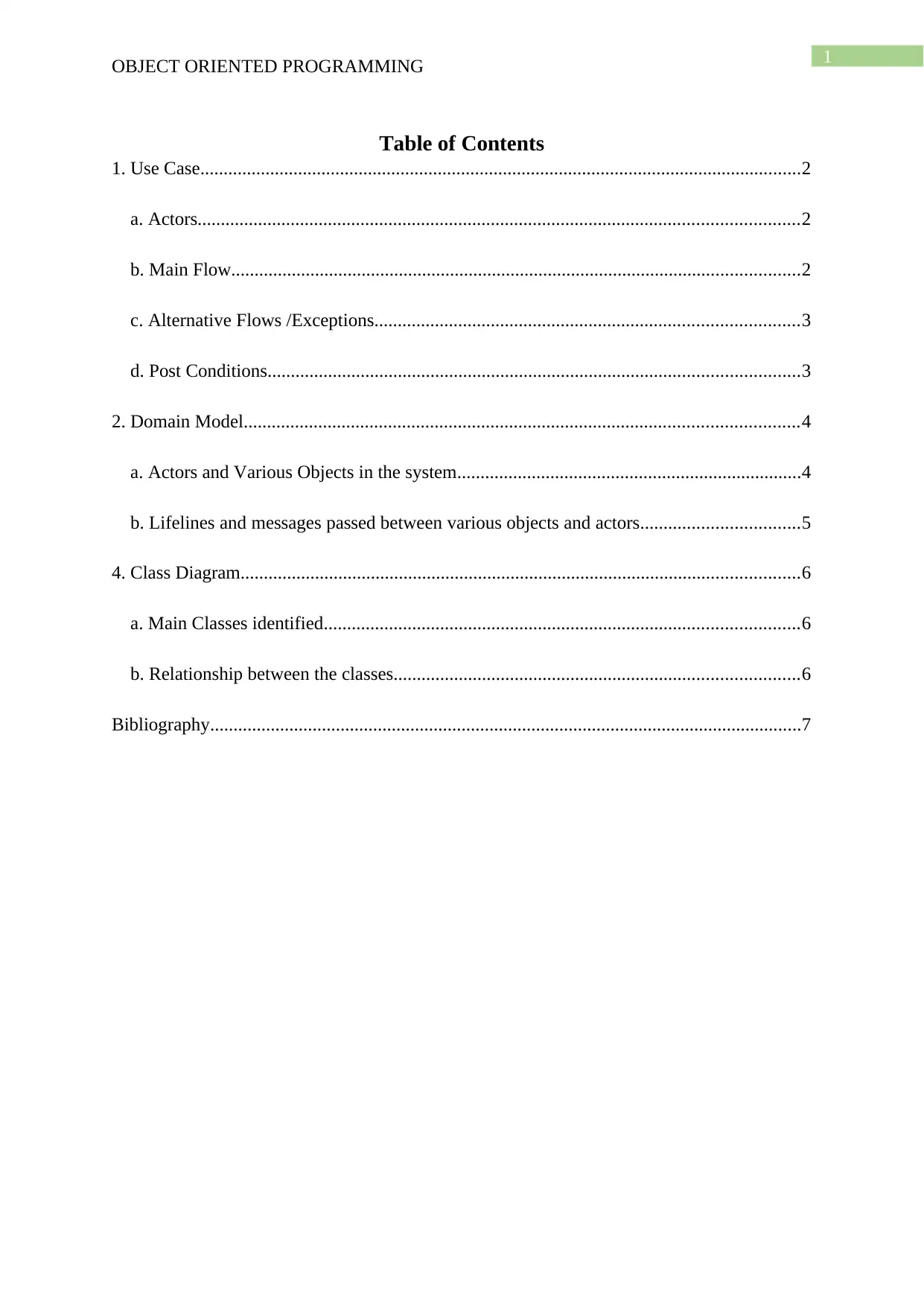
1
OBJECT ORIENTED PROGRAMMING
Table of Contents
1. Use Case.................................................................................................................................2
a. Actors.................................................................................................................................2
b. Main Flow..........................................................................................................................2
c. Alternative Flows /Exceptions...........................................................................................3
d. Post Conditions..................................................................................................................3
2. Domain Model.......................................................................................................................4
a. Actors and Various Objects in the system..........................................................................4
b. Lifelines and messages passed between various objects and actors..................................5
4. Class Diagram........................................................................................................................6
a. Main Classes identified......................................................................................................6
b. Relationship between the classes.......................................................................................6
Bibliography...............................................................................................................................7
OBJECT ORIENTED PROGRAMMING
Table of Contents
1. Use Case.................................................................................................................................2
a. Actors.................................................................................................................................2
b. Main Flow..........................................................................................................................2
c. Alternative Flows /Exceptions...........................................................................................3
d. Post Conditions..................................................................................................................3
2. Domain Model.......................................................................................................................4
a. Actors and Various Objects in the system..........................................................................4
b. Lifelines and messages passed between various objects and actors..................................5
4. Class Diagram........................................................................................................................6
a. Main Classes identified......................................................................................................6
b. Relationship between the classes.......................................................................................6
Bibliography...............................................................................................................................7
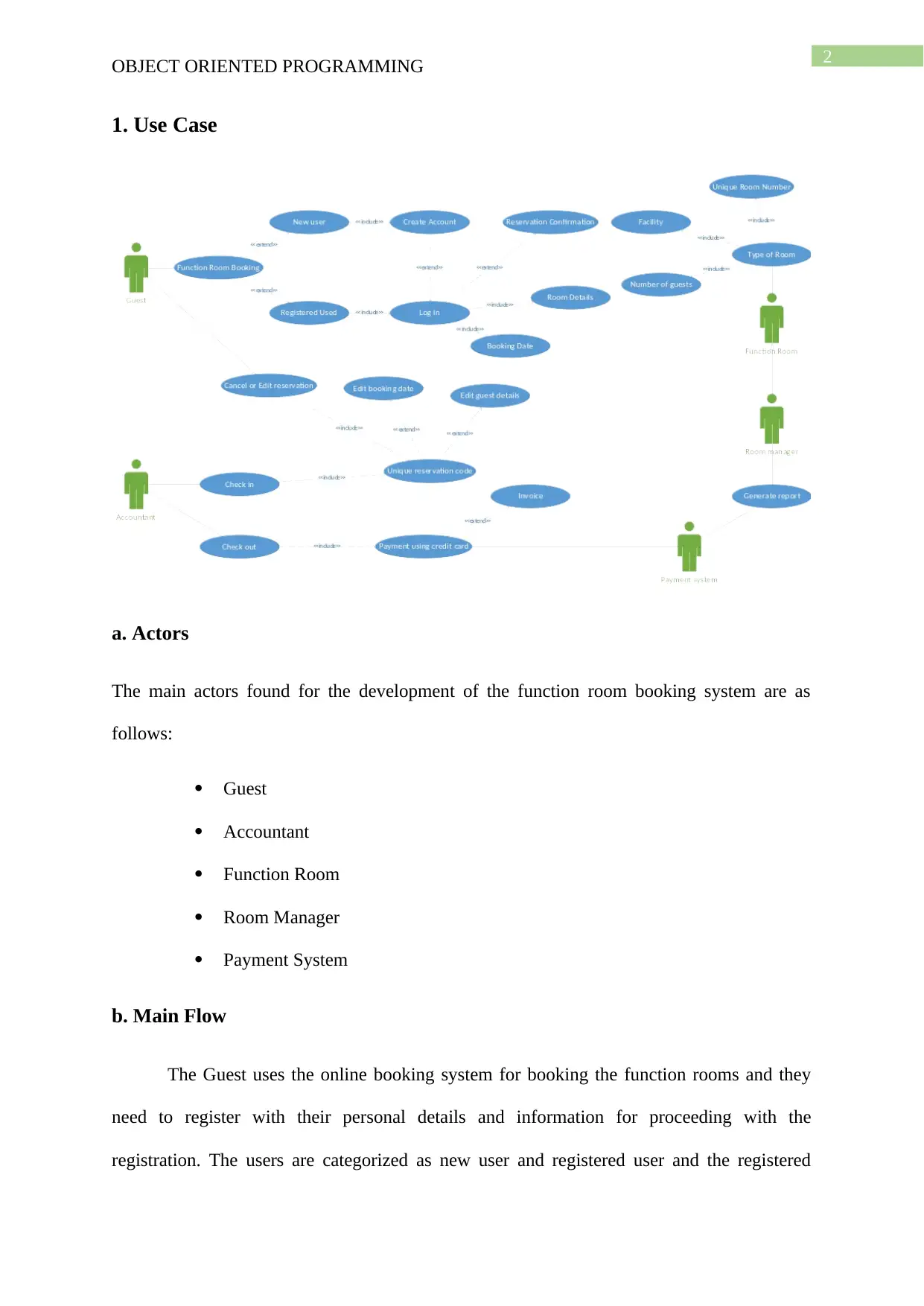
2
OBJECT ORIENTED PROGRAMMING
1. Use Case
a. Actors
The main actors found for the development of the function room booking system are as
follows:
Guest
Accountant
Function Room
Room Manager
Payment System
b. Main Flow
The Guest uses the online booking system for booking the function rooms and they
need to register with their personal details and information for proceeding with the
registration. The users are categorized as new user and registered user and the registered
OBJECT ORIENTED PROGRAMMING
1. Use Case
a. Actors
The main actors found for the development of the function room booking system are as
follows:
Guest
Accountant
Function Room
Room Manager
Payment System
b. Main Flow
The Guest uses the online booking system for booking the function rooms and they
need to register with their personal details and information for proceeding with the
registration. The users are categorized as new user and registered user and the registered
⊘ This is a preview!⊘
Do you want full access?
Subscribe today to unlock all pages.

Trusted by 1+ million students worldwide
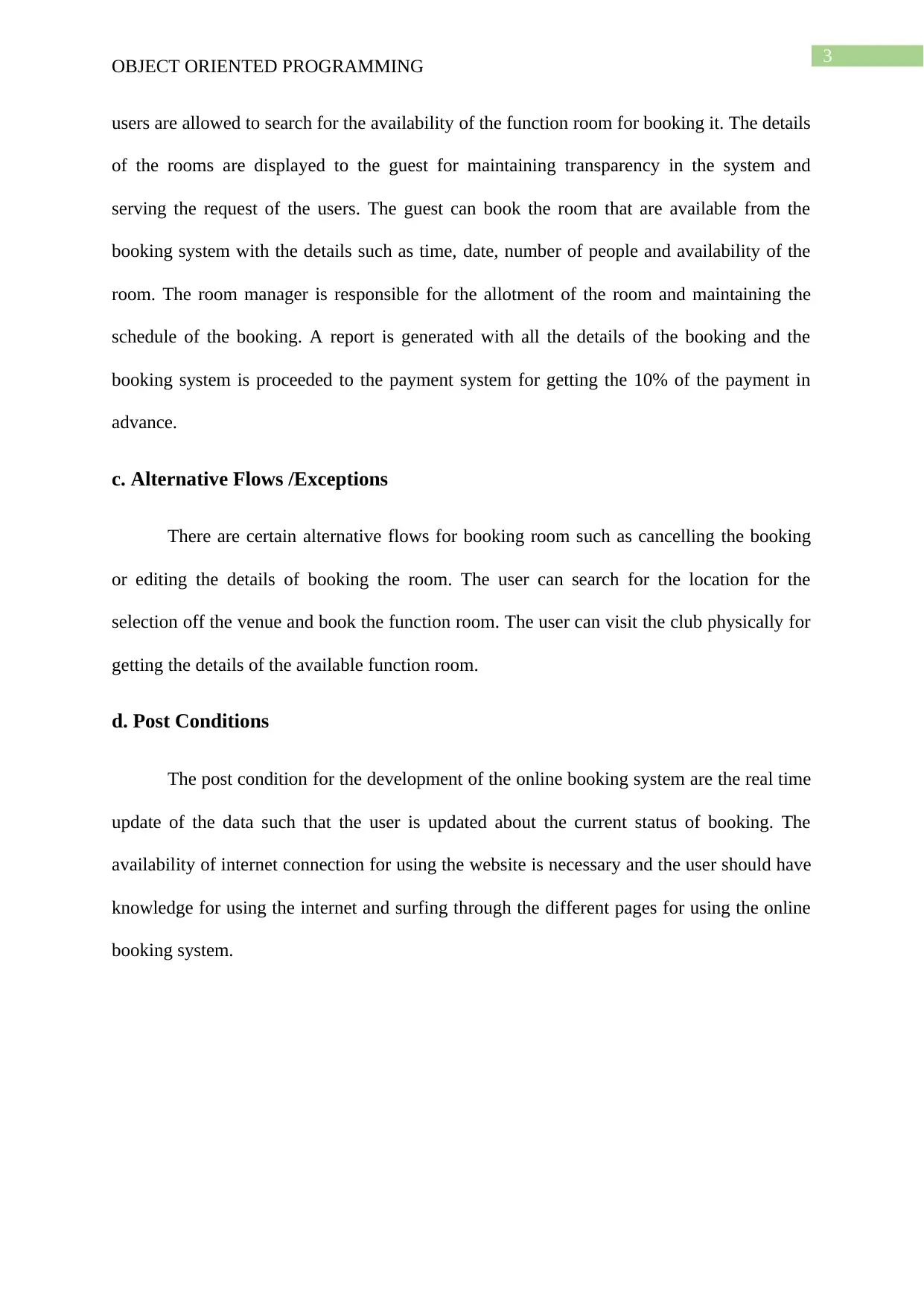
3
OBJECT ORIENTED PROGRAMMING
users are allowed to search for the availability of the function room for booking it. The details
of the rooms are displayed to the guest for maintaining transparency in the system and
serving the request of the users. The guest can book the room that are available from the
booking system with the details such as time, date, number of people and availability of the
room. The room manager is responsible for the allotment of the room and maintaining the
schedule of the booking. A report is generated with all the details of the booking and the
booking system is proceeded to the payment system for getting the 10% of the payment in
advance.
c. Alternative Flows /Exceptions
There are certain alternative flows for booking room such as cancelling the booking
or editing the details of booking the room. The user can search for the location for the
selection off the venue and book the function room. The user can visit the club physically for
getting the details of the available function room.
d. Post Conditions
The post condition for the development of the online booking system are the real time
update of the data such that the user is updated about the current status of booking. The
availability of internet connection for using the website is necessary and the user should have
knowledge for using the internet and surfing through the different pages for using the online
booking system.
OBJECT ORIENTED PROGRAMMING
users are allowed to search for the availability of the function room for booking it. The details
of the rooms are displayed to the guest for maintaining transparency in the system and
serving the request of the users. The guest can book the room that are available from the
booking system with the details such as time, date, number of people and availability of the
room. The room manager is responsible for the allotment of the room and maintaining the
schedule of the booking. A report is generated with all the details of the booking and the
booking system is proceeded to the payment system for getting the 10% of the payment in
advance.
c. Alternative Flows /Exceptions
There are certain alternative flows for booking room such as cancelling the booking
or editing the details of booking the room. The user can search for the location for the
selection off the venue and book the function room. The user can visit the club physically for
getting the details of the available function room.
d. Post Conditions
The post condition for the development of the online booking system are the real time
update of the data such that the user is updated about the current status of booking. The
availability of internet connection for using the website is necessary and the user should have
knowledge for using the internet and surfing through the different pages for using the online
booking system.
Paraphrase This Document
Need a fresh take? Get an instant paraphrase of this document with our AI Paraphraser
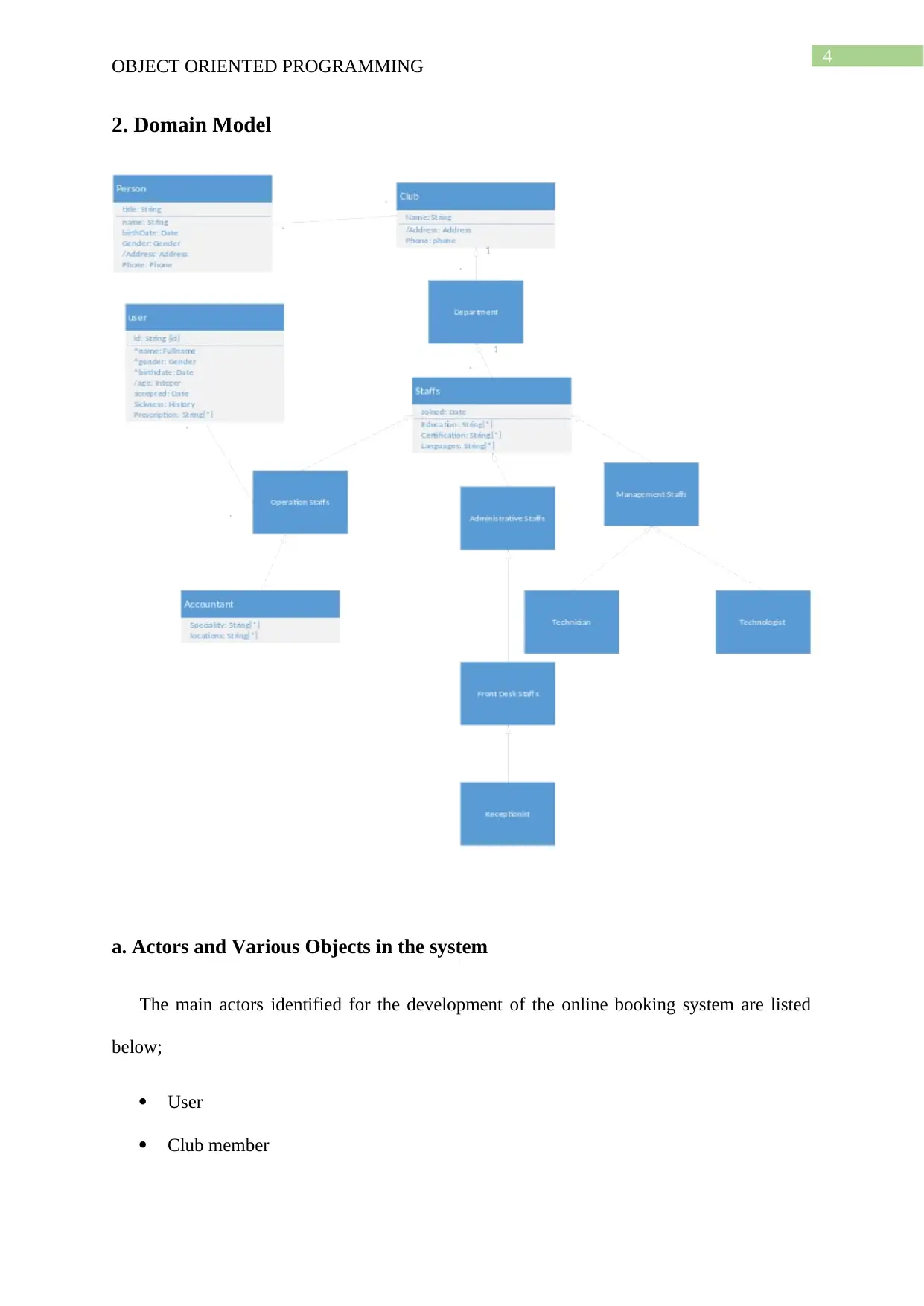
4
OBJECT ORIENTED PROGRAMMING
2. Domain Model
a. Actors and Various Objects in the system
The main actors identified for the development of the online booking system are listed
below;
User
Club member
OBJECT ORIENTED PROGRAMMING
2. Domain Model
a. Actors and Various Objects in the system
The main actors identified for the development of the online booking system are listed
below;
User
Club member
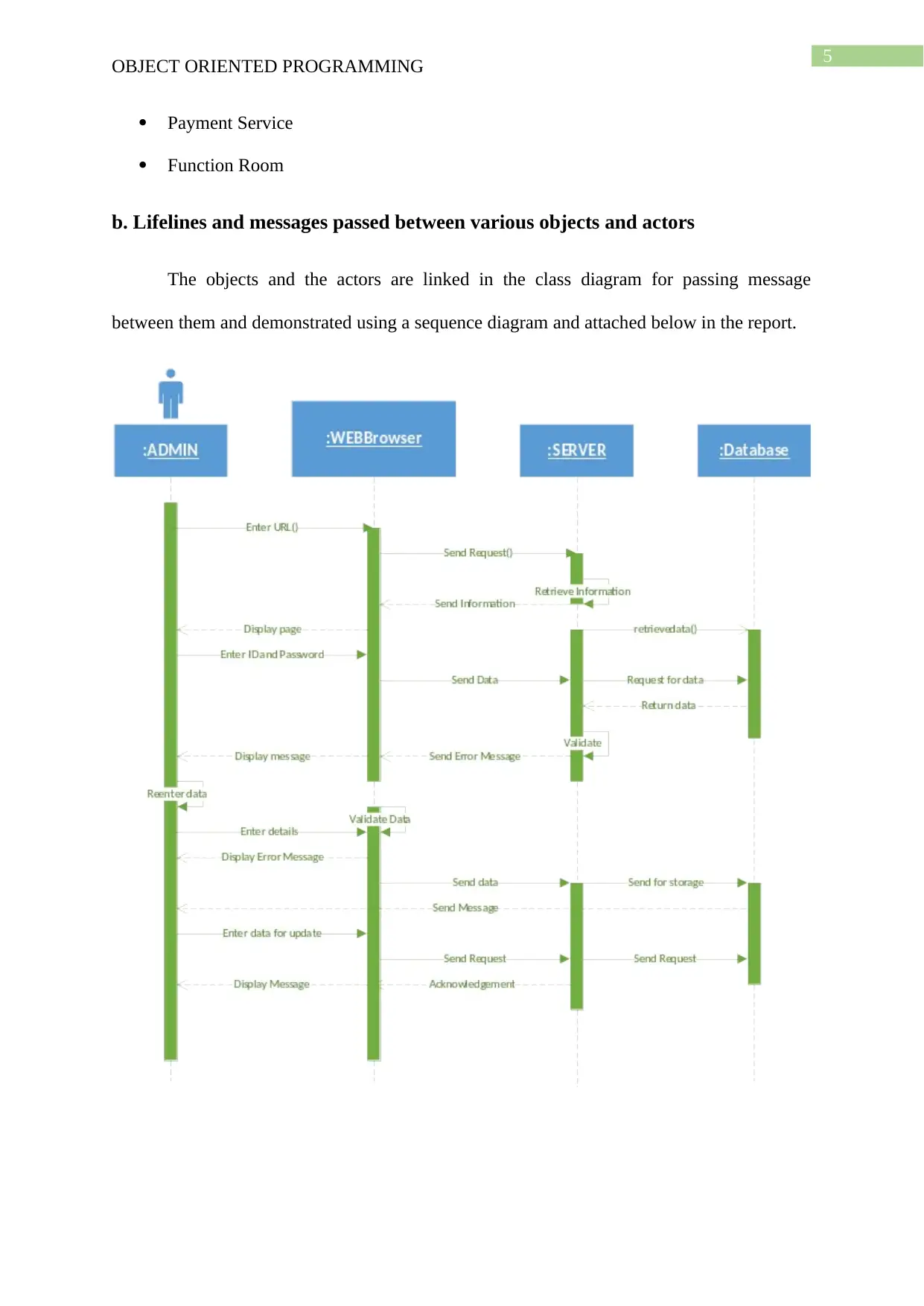
5
OBJECT ORIENTED PROGRAMMING
Payment Service
Function Room
b. Lifelines and messages passed between various objects and actors
The objects and the actors are linked in the class diagram for passing message
between them and demonstrated using a sequence diagram and attached below in the report.
OBJECT ORIENTED PROGRAMMING
Payment Service
Function Room
b. Lifelines and messages passed between various objects and actors
The objects and the actors are linked in the class diagram for passing message
between them and demonstrated using a sequence diagram and attached below in the report.
⊘ This is a preview!⊘
Do you want full access?
Subscribe today to unlock all pages.

Trusted by 1+ million students worldwide
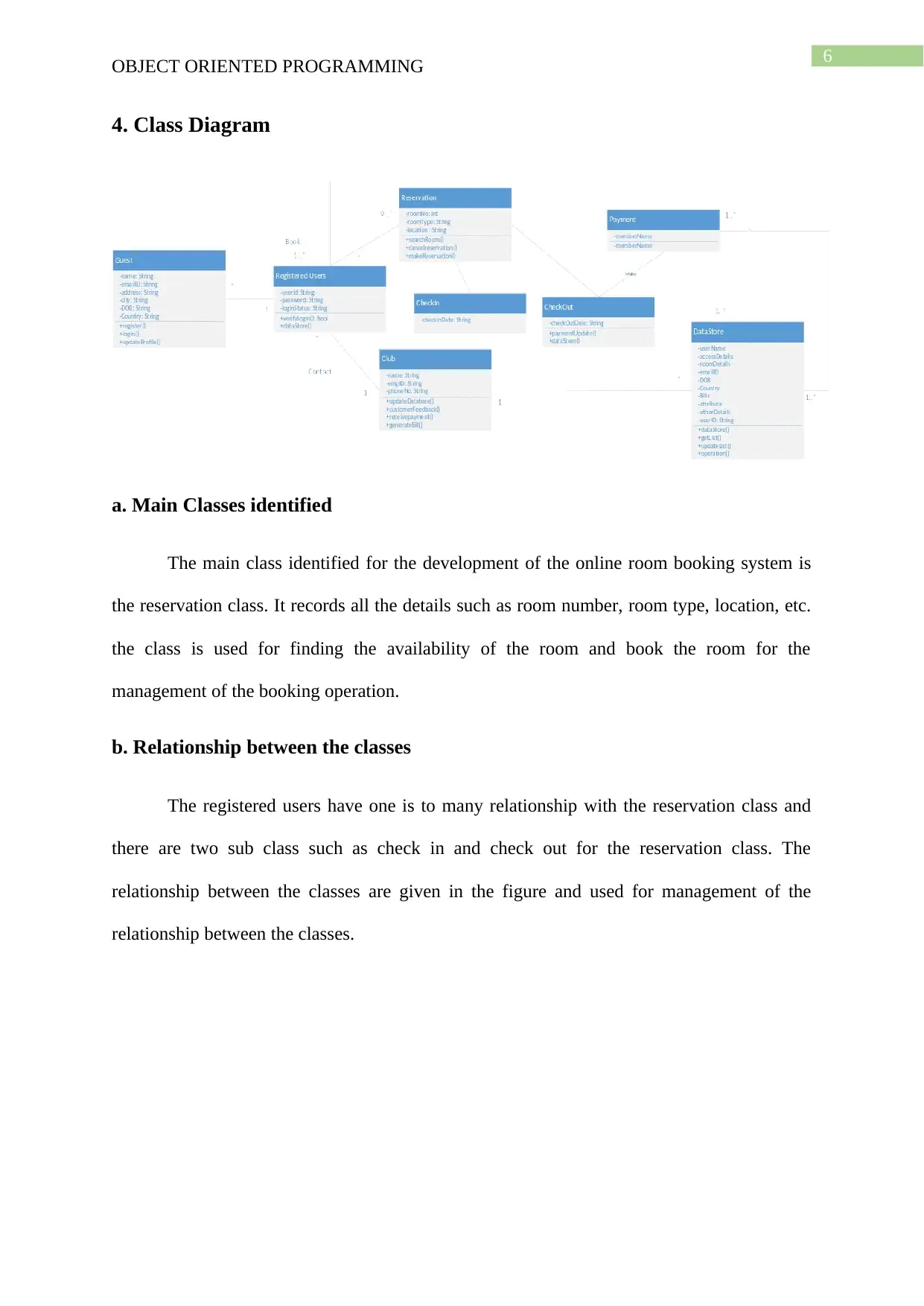
6
OBJECT ORIENTED PROGRAMMING
4. Class Diagram
a. Main Classes identified
The main class identified for the development of the online room booking system is
the reservation class. It records all the details such as room number, room type, location, etc.
the class is used for finding the availability of the room and book the room for the
management of the booking operation.
b. Relationship between the classes
The registered users have one is to many relationship with the reservation class and
there are two sub class such as check in and check out for the reservation class. The
relationship between the classes are given in the figure and used for management of the
relationship between the classes.
OBJECT ORIENTED PROGRAMMING
4. Class Diagram
a. Main Classes identified
The main class identified for the development of the online room booking system is
the reservation class. It records all the details such as room number, room type, location, etc.
the class is used for finding the availability of the room and book the room for the
management of the booking operation.
b. Relationship between the classes
The registered users have one is to many relationship with the reservation class and
there are two sub class such as check in and check out for the reservation class. The
relationship between the classes are given in the figure and used for management of the
relationship between the classes.
Paraphrase This Document
Need a fresh take? Get an instant paraphrase of this document with our AI Paraphraser
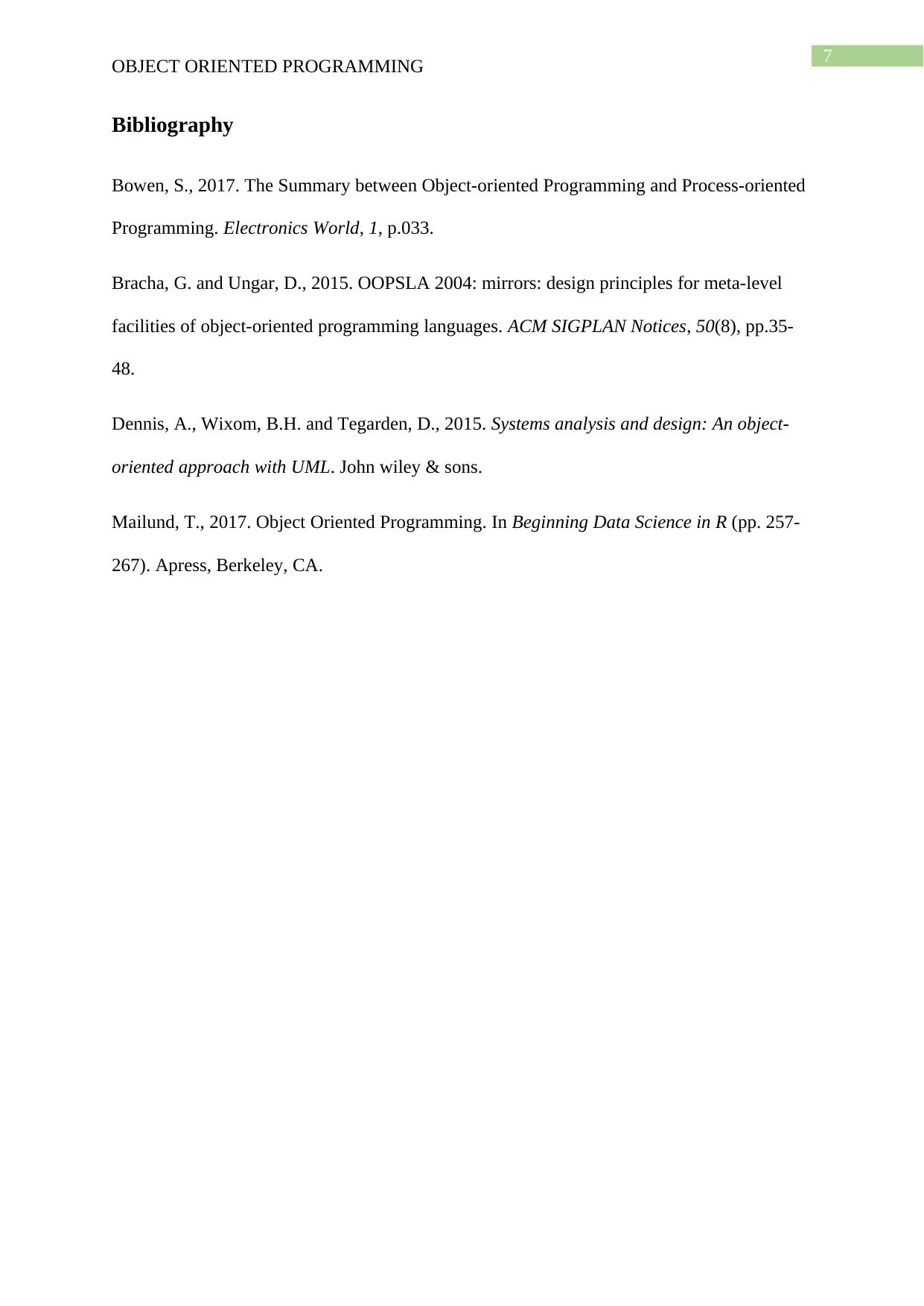
7
OBJECT ORIENTED PROGRAMMING
Bibliography
Bowen, S., 2017. The Summary between Object-oriented Programming and Process-oriented
Programming. Electronics World, 1, p.033.
Bracha, G. and Ungar, D., 2015. OOPSLA 2004: mirrors: design principles for meta-level
facilities of object-oriented programming languages. ACM SIGPLAN Notices, 50(8), pp.35-
48.
Dennis, A., Wixom, B.H. and Tegarden, D., 2015. Systems analysis and design: An object-
oriented approach with UML. John wiley & sons.
Mailund, T., 2017. Object Oriented Programming. In Beginning Data Science in R (pp. 257-
267). Apress, Berkeley, CA.
OBJECT ORIENTED PROGRAMMING
Bibliography
Bowen, S., 2017. The Summary between Object-oriented Programming and Process-oriented
Programming. Electronics World, 1, p.033.
Bracha, G. and Ungar, D., 2015. OOPSLA 2004: mirrors: design principles for meta-level
facilities of object-oriented programming languages. ACM SIGPLAN Notices, 50(8), pp.35-
48.
Dennis, A., Wixom, B.H. and Tegarden, D., 2015. Systems analysis and design: An object-
oriented approach with UML. John wiley & sons.
Mailund, T., 2017. Object Oriented Programming. In Beginning Data Science in R (pp. 257-
267). Apress, Berkeley, CA.
1 out of 8
Related Documents
Your All-in-One AI-Powered Toolkit for Academic Success.
+13062052269
info@desklib.com
Available 24*7 on WhatsApp / Email
![[object Object]](/_next/static/media/star-bottom.7253800d.svg)
Unlock your academic potential
Copyright © 2020–2025 A2Z Services. All Rights Reserved. Developed and managed by ZUCOL.





